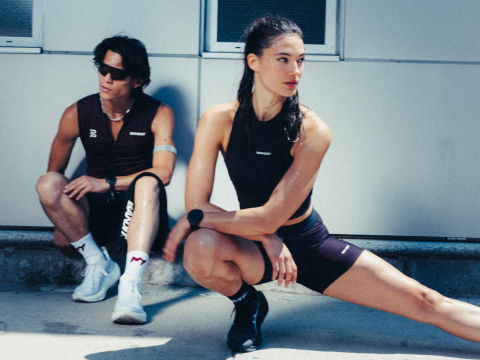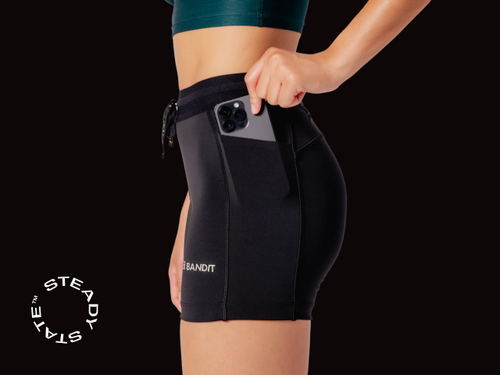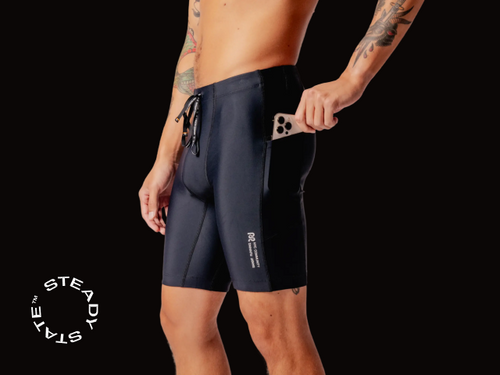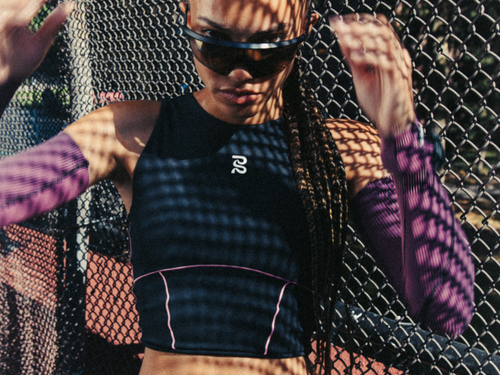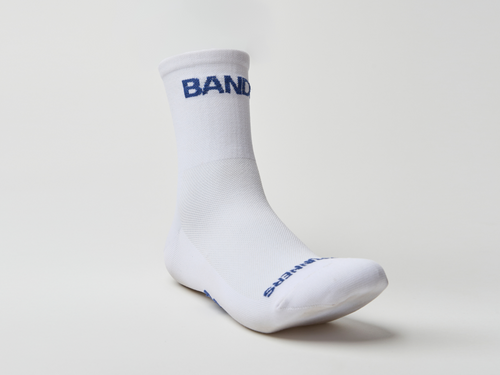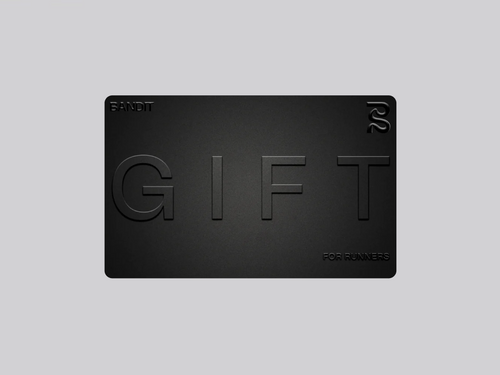For Summer 2024 we wanted to experiment with creating something that was mad. Something that captured the otherworldly feeling of running into the summer heat.
Thankfully, through the power of The Program summer training and good old friendship, we were connected with Nicolas and Scott of Router, the Queens based design and technology studio formerly known as RecycleReality. These guys live in the multi dimensional world of Blender, a 3D design software -- not to be confused with the multi dimensional mind and body blender of a deep July long run. Take a look behind the scenes of the making of this awesome experimental video.
Nicholas, tell us about yourself...
Hello internet, my name is Nicholas Byrne, and I’m the 3D/video artist behind the Bandit Summer Madness campaign teaser.
I’m a partner at Router alongside Scott Diekema and Sam Lowe. We’re a creative studio focused on animation, web, and experiential projects for clients primarily in music and fashion.
My work as an artist is multi-disciplinary. I usually work with the mediums of light, sound, and motion. I write songs and play in a couple of bands as well (Hiding Places, Drawl). I apply the processes of these practices to each other, and it propels me forward.
Walk us through your creative process / approach to creating the video.
Tim brought us onto the campaign to produce lighting and visual assets for the shoot. We knew we were going to film an epic teaser with a slow-motion runner in another plane of existence. I needed to light the shot in a way that would be versatile for editing later and reproducible in a digital 3D environment.
I opted for a black backdrop instead of a green screen because I dislike how green screens bounce green light onto the subject. I was interested in the highest contrast possible between the runner and the background, so we aimed two warm white fixtures from the side to hit only the subject. Then we added a cooler hairlight to give the runner more life and dimension. We spent about an hour on the lighting to make sure we got it right. Dare I say, it was worth it.
It’s convenient to be the lighting designer on set and also the editor/animator of the final output because I was able to design the shot to reduce the amount of computer work I would have to do later.

What technology / tools did you use to make the video?
The whole look was done in Blender (Cycles) and After Effects. We chatted with the Bandit team about trying this exclusively in After Effects, but we opted for building in an environment with a more robust 3D interface and ray tracing light rendering capabilities.
I rotoscoped Parker away from the background and then mapped the image sequence to a surface in Blender. This allowed me to change the lighting conditions of the scene on top of the lighting we baked into the shot at the studio. The camera and lights were parented to an animated object, and Parker was also animated forward.

How did your Masters in Fine Arts (lighting design) come into play?
I have a MFA from Parsons School of Design in Lighting Design, and one of the biggest lessons that I apply to my work (which sounds obvious) is that light bounces off of surfaces differently based on their material properties. We chose a matte black curtain backdrop because it wouldn’t reflect as much light, and made sure to point the fixtures only on the runner.
The most successful part of this animation was accomplishing the same lighting conditions at the studio and in the 3D rendering environment. Before shooting, I thought about where the fixtures needed to be to create a dramatically-lit runner who would be easy to rotoscope in front of the sun.
I also do concert lighting at Brooklyn venues like Baby’s Alright and Elsewhere, and think about pairing color, intensity, and movement with music. My master’s thesis was on this topic. The oscillating expressions of “Again” by Oneohtrix Point Never felt like a good expression of the out-of-this-world fiery visual look of the Summer Madness campaign.Tim and Nick picked “Summertime” by the Zombies, which I think closed out the video perfectly.

What were some of the toughest challenges in the project and how’d you work around them?
The most technically difficult part of this project was calculating the speed that each part of the scene should be moving. Jacob shot the footage in slow motion, and I had to sync up the speed of the moving cameras and the rising sun. Luckily the camera speed and the running speed looked great on the first render, and then we finished up the sunrise back in After Effects.
Did you sneak any personal touches or unique elements into the vid?
I’m a bit obsessed with recreating realistic lighting environments in 3D scenes, and I think adding a rising sunlight that created a shadow behind Parker was a finishing touch that really helped sell the look.

What’s something you learned on this project that you could carry into the next one?
I do a lot of digital 3D work in Blender and After Effects, as well as lighting design and production in real-world environments. Surprisingly, these two areas of work rarely intersect for me, so this was a cool opportunity to combine the real and the virtual. I’m excited to do more projects in this lane.

